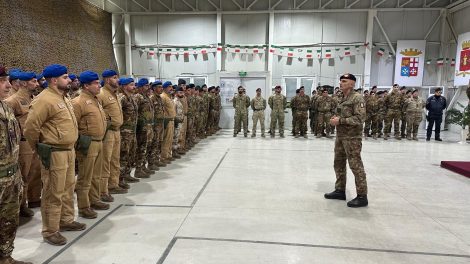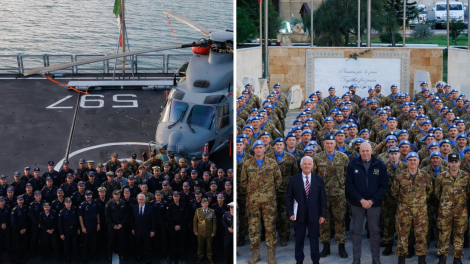Seafuture 2021, the international exhibition and business convention in La Spezia’s Naval Base, has drawn to a close. The seventh edition of the marine, defence and industry-oriented fair registered over 9,000 participants, 200 exhibiting companies and 50 foreign delegations.
The strategic relevance of this sector was underscored by the patronage of key Italian firms – Leonardo, Fincantieri, MBDA among all – and the support of the Italian institutions, namely the Italian Ministries of Defence, Infrastructures and Transports and Foreign Affairs.
“The central factors of Italy’s security and growth are here,” said Defence Minister Lorenzo Guerini in the opening speech on Tuesday, highlighting the importance of the sea as a cultural and economic bond with other nations – as well as an ecological heritage and a food reserve.
But the wider Mediterranean area, “our area of pre-eminent strategic interest,” is also increasingly “at the centre of geopolitical disputes, including technological and industrial clashes,” where “the protection of natural interests cannot be separated from a continuous, free, safe and sustainable use of the sea as an essential factor of security, stability and prosperity among peoples.”
At Seafuture the Navy’s Chief of Staff, Admiral Giuseppe Cavo Dragone, described to the daily Il Secolo XIX this naval and industrial turning point – a veritable “naval diplomacy” expansion within and beyond the Wider Mediterranean area – as an increased participation to international operations and increased autonomous, as well as coalition-driven, deployments.
Hence, Italian institutions and industries are aligned in expanding their influence and operations. Over the summer the government signalled a way forward with a multi-year, multi-billion industrial policy roadmap, which includes joint R&D with other countries (such as the Tempest fighter jet and helicopters), the renovation of military assets and the acquisition of new ones, including long-range Cruise missiles for Italian submarines and FREMM frigates.
Meanwhile, the industry is moving ahead at full steam. MBDA, the European multinational dedicated to manufacturing missiles, used the Seafuture platform to unveil the Teseo MK2/E, a next-gen iteration of the family of products known internationally as Otomat developed in the past three years in collaboration with the Italian Navy.
Leonardo Profumo, CEO of defence giant Leonardo, also took advantage of the fair to describe the company’s work to develop sea drones. In 2020 only the company devoted 12% of its revenue (roughly €1.6 billion) to these 10-metre long crafts (built in La Spezia), controlled remotely through Leonardo’s own IA-heavy software. That concept piqued the interest of the Italian Defence and Navy, who might employ them for navigation and surveillance missions.
As the CEO explained, “everything that’s sea-related, considering our key competencies (namely, security-related electronics integrated with weapons systems) is absolutely fundamental.” He also underscored that the Navy makes use of 90 Leonardo-branded helicopters, which will also be employed for the training of future US Navy pilots and the Polish forces.
The event’s closing remarks were uttered by Giancarlo Giorgetti, Minister for Economic Development, who had previously told Il Secolo XIX that it’s time to “change the rules on military export.” This, together with Prime Minister Mario Draghi’s recent acknowledgement that Italy must “clearly spend much more on defence than hitherto,” hints at the nation’s comprehensive pivot towards an increased role of the Defence ecosystem.





